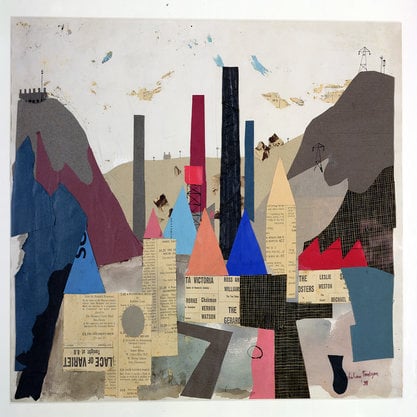Article
Natalsya, Amrus (1933--) By Rath, Amanda Katherine
Article
Amrus Natalsya was born 21 October 1933, in Medan, Sumatra. Having also trained as a painter, Natalsya is known primarily as a pioneering figure of modern wood sculpture in Indonesia. Beginning in the early 1950s, he developed a signature style, combining the carving techniques, sculptural forms, and flat decorative elements of his Batak cultural background with “revolutionary realism”, a combination of social and romantic realism. Typical subjects of his work are the community life of common people and the labors of the poor. His early sculptural work shows the influence of one of his instructors and mentors, Hendra Gunawan (1918, Bandung–1983, Bali), with whom he studied while a student at the Indonesia Fine Arts Academy or Akademi Seni Rupa Indonesia (ASRI) in Yogyakarta, 1954–1962. In 1961, Natalsya co-founded Sanggar Bumi Tarung (SBT) or Fighting Grounds studio with fellow ASRI students. Under his leadership, SBT’s artistic program was, in certain respects, more radical than that of its sponsoring organization, the People’s Culture Institute or Lembaga Kebudayaan Rakyat (Lekra), the cultural branch of Indonesia’s Communist Party. With the political changes of the late 1960s, SBT was banned and Natalsya was imprisoned without trial from 1968 to 1973. After his release, he was refused access to many venues and exhibitions. These circumstances changed considerably after 1998, with the introduction of political reforms in Indonesia. Natalsya continues to work in a social realist mode. In addition to free-standing sculptures, his work since the 1990s has included intricately carved and painted low-relief panels, often set within frames with roughly hewn decorative elements.


